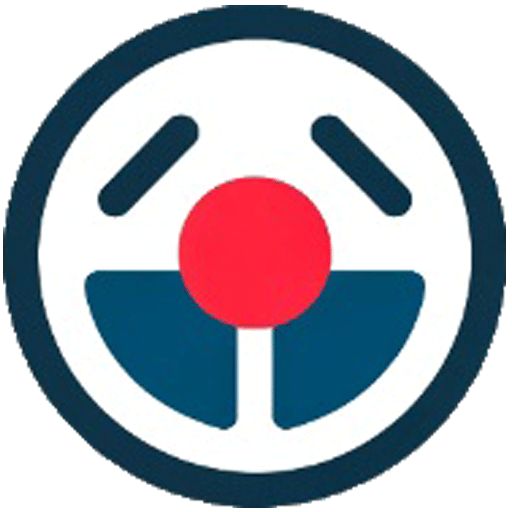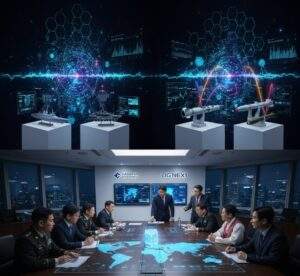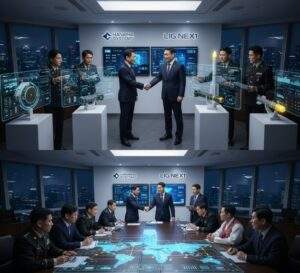Why AESA Radar: The ‘Brain’ Behind the ‘Big Iron’
International headlines tracking the rise of K-Defense are predictable. They focus, almost single-mindedly, on the “big iron”: the KF-21 Boramae fighter jet slicing through the sky, the K2 Black Panther tanks rolling onto Polish soil, and the K9 Thunder self-propelled howitzers dominating export charts.
These platforms are, without question, the public face of South Korea’s explosive entry into the Tier-1 global defense market. But from a perspective in Seoul, this focus on the platform misses the real story.
What US and European media often overlook is that the true disruption—the high-margin, high-tech revolution—is not the steel platform but the sophisticated, domestically-produced silicon inside it.
The Platform vs. Component Fallacy: What US Media Misses
To understand the long-term trajectory of K-Defense, analysts and investors must look past the fuselage and armor. The real strategic and financial value lies in the components.
The Allure of “Big Iron” Headlines
The global media and military forums are captivated by the macro-level performance of these platforms. This is understandable; a new, non-Western fighter jet or a million-dollar tank is a tangible symbol of a new defense power. However, this coverage often treats the platform as a singular product.
An Insider’s View: The Silicon vs. Steel Dynamic
From a Seoul perspective, the platforms are “vessels.” The battle for 21st-century defense supremacy is fought with gallium nitride (GaN) and complex algorithms, not just steel. For decades, Korea’s vulnerability was its reliance on imported “brains”—the mission computers, radars, and sensors—from the US or Israel. This dependency created technological bottlenecks and, more importantly, export restrictions.
What analysts in Korea are noting is that this era is definitively over. The true K-Defense story is one of technological sovereignty, and the crown jewel of this effort is the AESA radar.
AESA: The Crown Jewel of Korean R&D
Active Electronically Scanned Array (AESA) radar is a non-negotiable component for any modern warfare platform. Unlike older, mechanically-scanned radars, an AESA uses thousands of solid-state modules to steer its beam electronically. This allows it to scan faster, track hundreds of targets, and resist enemy jamming.
Cracking the Code: A Strategic “Do-or-Die” Technology
The development of the KF-21’s AESA radar is a story of national determination. When the United States declined to transfer core AESA technologies, Seoul was faced with a “do-or-die” moment. Hanwha Systems was tasked with developing it domestically.
According to local defense reports, the successful flight testing of this domestic AESA radar was met with immense strategic relief. It was seen as breaking a “technology blockade” and proving Korea could innovate at the same level as established defense giants.
The ‘R&D Parent’: AESA’s Multi-Domain Ecosystem
This is where the “Seoul Insider” perspective is critical. The KF-21’s AESA is not a one-off project. It is the “R&D parent” for an entire ecosystem of advanced sensors.
This same core technology is being scaled and adapted by both Hanwha and LIG Nex1 for a new generation of systems, including the L-SAM (Korea’s “high-altitude shield”) and advanced naval radars. This R&D synergy—where a breakthrough for the air force directly benefits the army and navy—is creating an integrated, multi-domain defense network that competitors are only beginning to appreciate.
The Seoul View: Why Hanwha & LIG Nex1 Are the Real Stars
US analysts default to focusing on the prime contractors: Korea Aerospace Industries (KAI) for the KF-21 or Hyundai Rotem for the K2 tank. But in Seoul, the financial and tech communities are far more excited by the Tier-1 suppliers who, like Intel or Nvidia, provide the high-margin “brains.”
Hanwha Systems: The “Eyes” of K-Defense
Hanwha is far more than just the AESA radar provider. It builds the “central nervous system” of the platform. This includes the mission computer, the command-and-control (C2) systems, and the crucial datalinks that connect the entire battlefield. This is the high-margin, software-driven “glue” that enables true network-centric warfare.
LIG Nex1: The “Spear” of Precision Strike
If Hanwha provides the “eyes,” LIG Nex1 provides the “spear.” LIG Nex1 dominates the high-stakes world of precision-guided munitions (PGMs), advanced sensors, and missile interceptors. While KAI builds the jet, LIG Nex1 builds the “strikers”—like the KGGB GPS-guided bomb—and the “shield” in the L-SAM. This is the repeatable, high-value-add business that sustains a defense industry.
Analysis: Why This Matters for Global Investors & Militaries
This shift from platform assembler to high-tech component master has two profound implications for our target audience.
The “ITAR-Free” Advantage: A New Supply Chain
For a purchasing nation like Poland, the UAE, or Saudi Arabia, buying a US or European defense platform means getting entangled in the complex US ITAR (International Traffic in Arms Regulations) or FMS (Foreign Military Sales) process for every critical component and upgrade.
This is K-Defense’s ultimate unique selling proposition. Because South Korea domestically produces the AESA radar, avionics, and missiles, buyers are not beholden to Washington or Brussels for critical upgrades or parts. Local Korean media emphasizes this point relentlessly: K-Defense offers speed, technological autonomy, and supply chain security.
The Investor’s Take: Shifting to a High-Margin Software Model
For investors, the most exciting part of this story is the shift in business models. The old defense model was selling hardware, which has a finite, low-margin lifespan. The new tech model, which Hanwha and LIG Nex1 embody, is based on software and upgrades.
The true value of a domestically-owned AESA radar is that its performance can be dramatically improved via simple software updates. This shifts the revenue model from one-off hardware sales to long-term, high-margin software support and capability upgrades—a recurring-revenue stream that high-tech investors understand and value immensely.
Conclusion: Korea’s Next Chapter is Written in Silicon
To truly understand K-Defense, one must look past the fuselage and the armor plate. The success of the KF-21 and K2 tank is just the opening chapter.
The real, enduring story—and the one that poses the greatest threat to incumbent defense giants—is the quiet success of Hanwha Systems and LIG Nex1. They have mastered the core technologies of the modern battlefield: sensors, data, and precision strike.
From a perspective in Seoul, the message is clear: South Korea is no longer just building the “body” of the world’s weapons. It is now building the “brain.” And that is the technology that will disrupt the market long after the headlines about tanks and jets have faded.
Hi, I’m [jeybee]. As a long-time resident of Seoul, I’m passionate about uncovering the authentic, everyday magic of Korea. This blog is my way of sharing my favorite spots, tips, and cultural insights with you, beyond the usual tourist traps.




